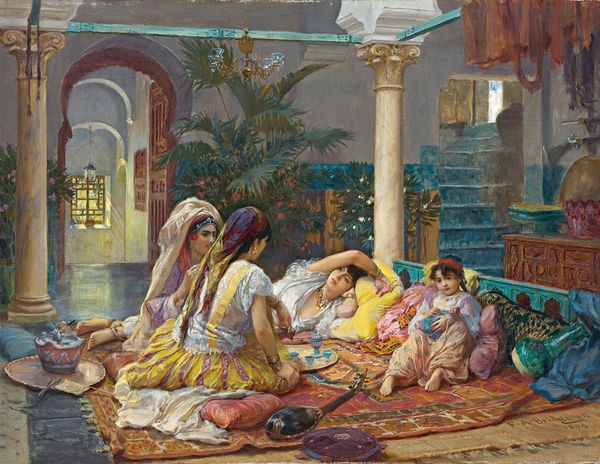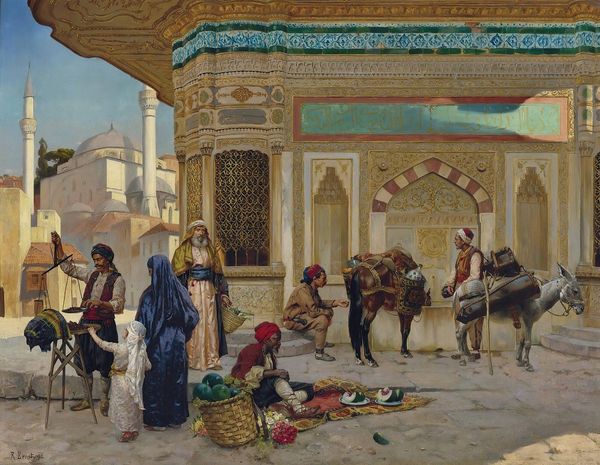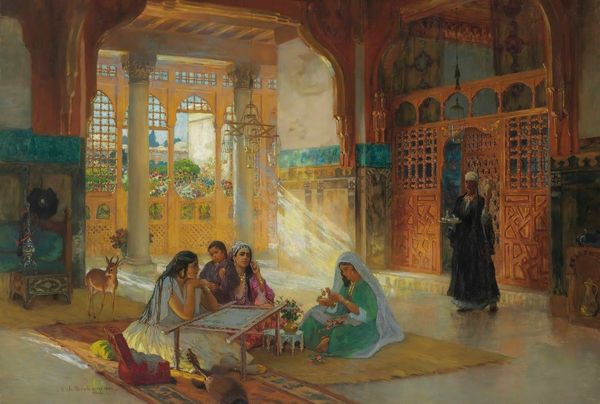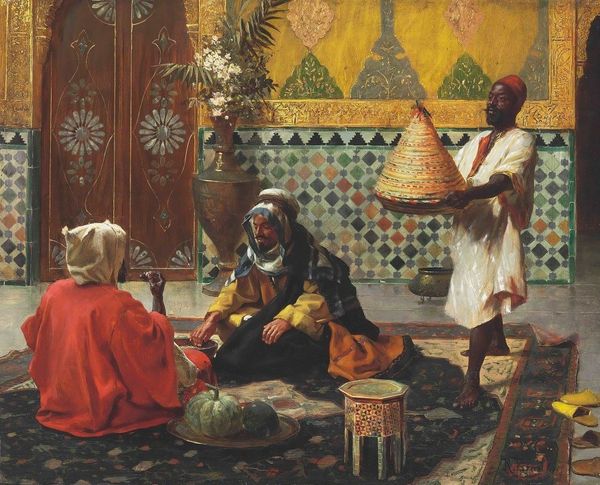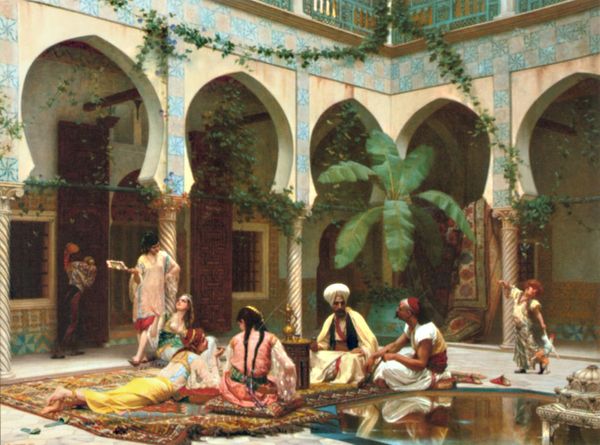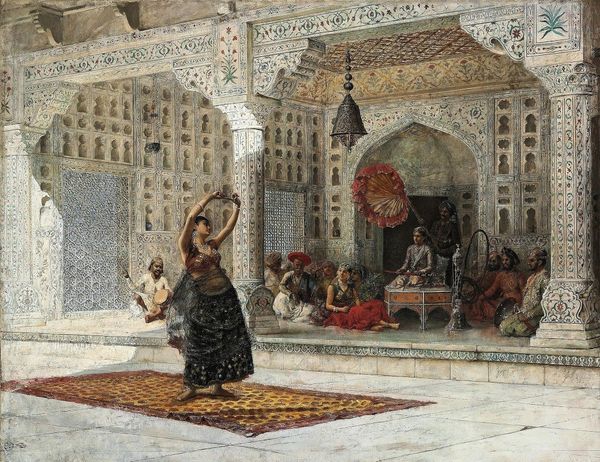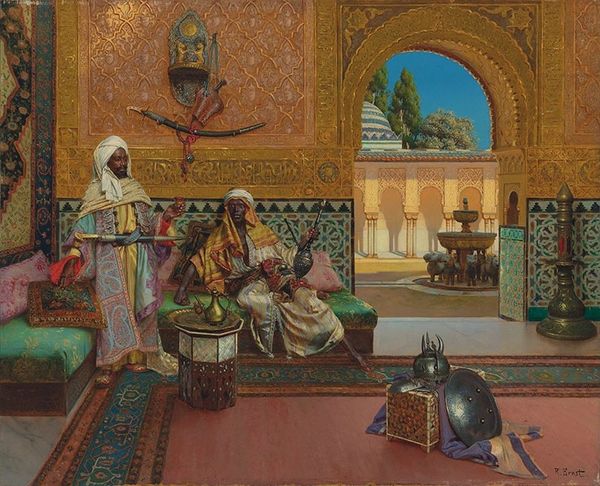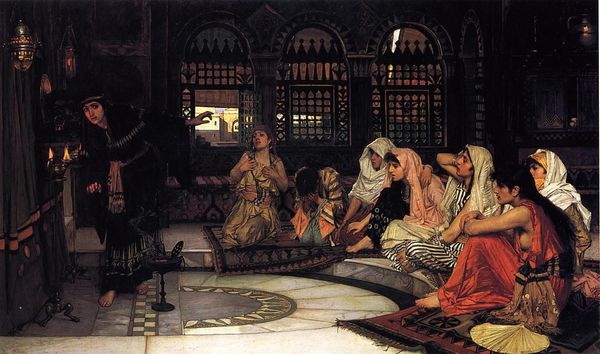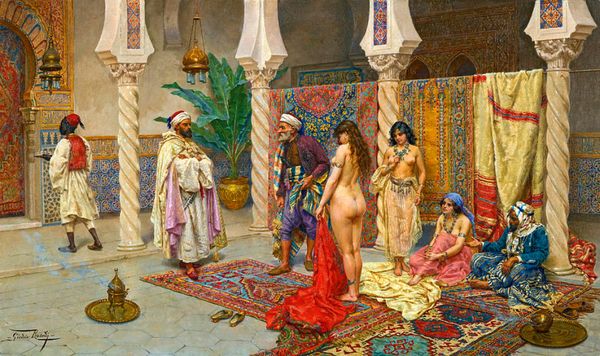
painting, oil-paint
#
gouache
#
painting
#
oil-paint
#
figuration
#
oil painting
#
orientalism
#
genre-painting
#
academic-art
Copyright: Public domain
Giulio Rosati painted this oil painting, titled 'The Harem Dance', some time in the late 19th or early 20th century. In it we see dancing women, musicians, and richly decorated architecture, all designed to evoke an image of the 'Orient'. Rosati was one of many European artists who made paintings of North Africa and the Middle East, a style now known as Orientalism. Orientalist painters often had never visited the places they depicted, and instead relied on other paintings, photographs, and travellers' tales for their source material. These artworks spoke more to European fantasies and colonial desires than they did to actual Eastern cultures. The Harem Dance depicts an imagined scene of leisure and pleasure, with the dancer and musicians seemingly performing for their own enjoyment. But what does it mean to depict a culture this way? How might social, economic, and political power dynamics shape cultural representation? These are questions that art historians try to answer by diving deep into historical documents and visual materials.
Comments
No comments
Be the first to comment and join the conversation on the ultimate creative platform.


